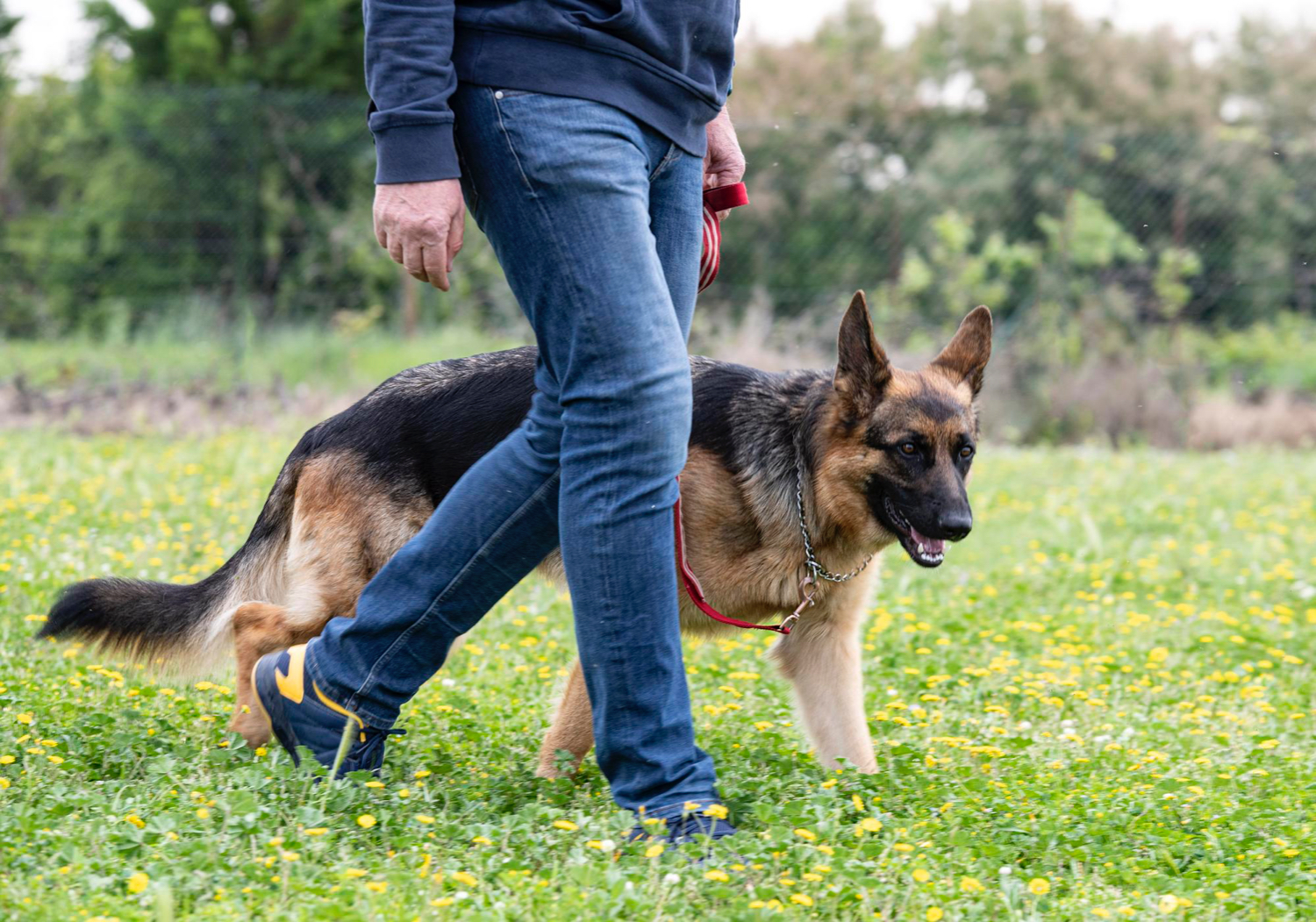A new dog at home always comes with some difficulties. It doesn’t matter if we buy a puppy from a kennel or adopt an adult dog. There are things we need to teach every four-legged dog. One of these is walking at the foot, an exercise that is very useful in everyday situations. How do you teach your dog to do this?

Teaching your dog to heel – is it necessary?
Most owners limit themselves to teaching their dog to react to their name, to the commands „sit”, „give paw”, „lie down” and „come to me”. They treat learning to walk at the foot as something unnecessary, whereas this skill can be very useful during everyday walks. It is perfect when crossing a pedestrian crossing, passing reactive, barking dogs or when walking on a narrow, crowded pavement. It allows you to avoid unpleasant situations and control your dog’s emotions.
However, it is important not to abuse this skill – a walk should first and foremost meet the needs of the animal, so we should allow it to sniff and relieve itself, and use heeling as part of training and in specific situations.
Heeling or a loose leash?
Many dog owners confuse these two terms and consider them synonymous. However, walking on a loose lead is something completely different to heeling. When training on a loose lead, the dog can move freely within the lead in such a way that it does not stretch the lead. This means that he can be in front of us, behind us or one and a half metres beside us, as long as the length of the tether allows him to do so. It is useful for eliminating persistent pulling during walks, relieving our wrists and controlling our pet’s emotions which become unhealthily agitated due to the tension of the leash.
Heeling, as the name suggests, consists of the dog being „glued” to our leg. Regardless of whether he is on or off-leash, he should constantly control his position, pace and walking direction, adapting to what the handler is doing. As this is part of many dog sports, the dog is also often required to maintain eye contact while heeling.
How do you teach your dog to heel? First steps
At the very beginning, we should consider which leg our dog should walk by, because. In cynological sports, it is required to deliver the animal to the left leg, but if you do not plan to do professional sports with your pet, you can choose the right side.
In the beginning, the dog should be taught to get to the leg and follow the hand. This is done by guiding the dog with a treat and rewarding it for correct execution. Over time, the threat is removed from the hand, the guiding gesture is minimised and a command is introduced. Once your pet knows how to get to the correct leg, training can begin.
The dog does not have to be on a leash, but in some cases, it can be helpful for correction if the pet tries to overtake us. It is advisable to start by taking the first steps along the wall so that it will be easier for the dog to understand what we expect from it. In the beginning, we should reward the dog for each step by holding a hand with a treat at the height of its chest and every time straightening it to give the reward – this way the dog will walk evenly and maintain eye contact, which is obligatory in dog sports and useful during everyday situations.
How to teach your dog to heel? Graduation of difficulty
With time, we reward the dog less and less and withdraw the treat from his hand. The hand is still held at chest level, but it is empty and the reward comes from a pouch or pocket. Then, too, we can try to practice in free space and introduce a command. However, remember to use a release command in addition to the „heel” command, which heralds the reward.
If we manage to reach the stage when the dog heels for a few metres, we can start introducing some difficulties, such as a gradual change of pace or direction of gait. However, it is worth remembering that this stage may be extremely difficult for your dog, so we should lower our requirements for him and adjust to his learning pace. With time, we should also introduce distractions, and change training places to be more attractive for the dog. In this way, we will be able to use this skill daily, in situations that are difficult for the pet.
